Kimberly K. Arcand's Blog
May 14, 2018
24 Hours of Light
Light is something we experience every day. For most people, “light” refers to what humans can detect with our eyes. It is illumination, what ignites our visual sense, the yin to the yang of dark. However, the type of light humans can detect with our eyes is just a small fraction that exists, and the true nature of light is much more expansive.In many ways, light behaves like a wave and this is the key to understanding its amazing capabilities. How tightly packed – or far apart – the waves are dictates light’s properties. For example, the longer the wave, the less energy the light typically carries, and vice versa. Each type of light has its own “super powers” both in their natural forms and in ways sculpted by science and technology.Picture a piano keyboard. The popular definition of light (in its visible form) would inhabit a few keys around middle C, while the rest of the piano represents the full breadth of light in its many forms. On one end of this piano of light, there are radio waves. As you move up through the octaves, there are other forms of light including microwaves, infrared, visible (or optical) light, ultraviolet, X-rays, and gamma rays.The presence of light in our lives, particularly in its invisible manifestations, is so commonplace that most of the time we do not even take notice. Fortunately May 16, 2018 has been declared the International Day of Light by the United Nations, and it is an excellent opportunity to explore the many ways we use and need light – in all of its forms -- throughout our daily lives.Here we look at some examples of light in our lives throughout the course of a single Earth day.12:00 am: On a clear, Moon-less night we can see thousands of stars (at least, away from the light pollution of urban areas).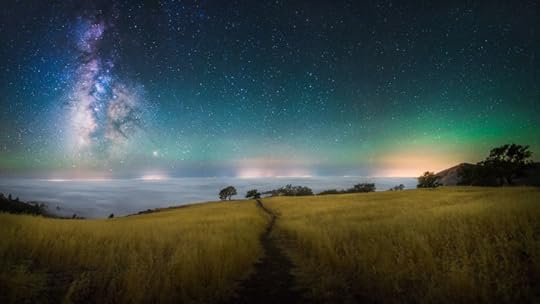 Stardust, Santa Barbara, CaliforniaCredit: Michael Shainblum. More: http://lightexhibit.org/bio_image71.h... am: The cosmos has much more than meets the unaided human eye, however. Most cosmic objects – including stars – emit light in many forms, spanning from radio waves to gamma rays.
Stardust, Santa Barbara, CaliforniaCredit: Michael Shainblum. More: http://lightexhibit.org/bio_image71.h... am: The cosmos has much more than meets the unaided human eye, however. Most cosmic objects – including stars – emit light in many forms, spanning from radio waves to gamma rays.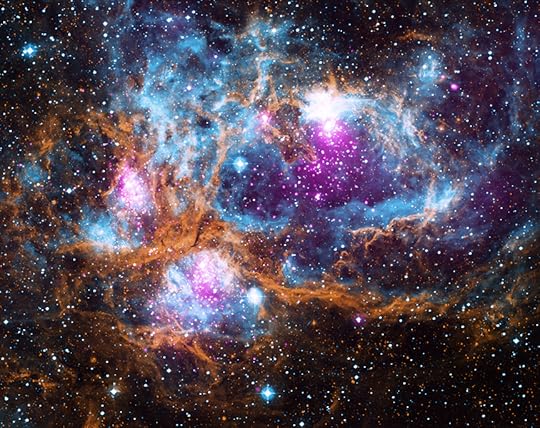 Star cluster NGC 6357. Credit: X-ray: NASA/CXC/PSU/L.Townsley et al; Optical: UKIRT; Infrared: NASA/JPL-Caltech More: http://chandra.si.edu/photo/2016/ngc6... am: As we tucked warmly in our beds asleep, our bodies are radiating heat. This heat is invisible to us, but it is detectable as infrared light by specially-designed cameras.
Star cluster NGC 6357. Credit: X-ray: NASA/CXC/PSU/L.Townsley et al; Optical: UKIRT; Infrared: NASA/JPL-Caltech More: http://chandra.si.edu/photo/2016/ngc6... am: As we tucked warmly in our beds asleep, our bodies are radiating heat. This heat is invisible to us, but it is detectable as infrared light by specially-designed cameras.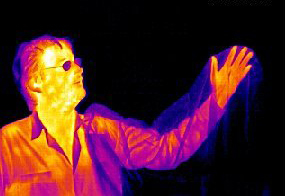 Much of a person's energy is radiated away in the form of infrared energy. Credit: NASA/IPAC More: http://coolcosmos.ipac.caltech.edu/co... am: As they prepare the early morning weather forecast, meteorologists consult satellite imagery that contains data in microwave light that can penetrate clouds and reveal precipitation.
Much of a person's energy is radiated away in the form of infrared energy. Credit: NASA/IPAC More: http://coolcosmos.ipac.caltech.edu/co... am: As they prepare the early morning weather forecast, meteorologists consult satellite imagery that contains data in microwave light that can penetrate clouds and reveal precipitation.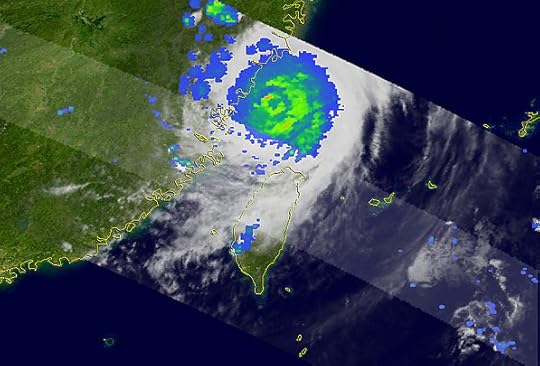 Satellite data of Typhoon Saomai from 2006http://earthobservatory.nasa.gov/Natu... Hal Pierce (SSAI/NASA GSFC).4:00 am: Making their way back their roost, bats catch food by sending out radio waves (which are converted into sound waves) and using the echoes to “see” their prey.
Satellite data of Typhoon Saomai from 2006http://earthobservatory.nasa.gov/Natu... Hal Pierce (SSAI/NASA GSFC).4:00 am: Making their way back their roost, bats catch food by sending out radio waves (which are converted into sound waves) and using the echoes to “see” their prey.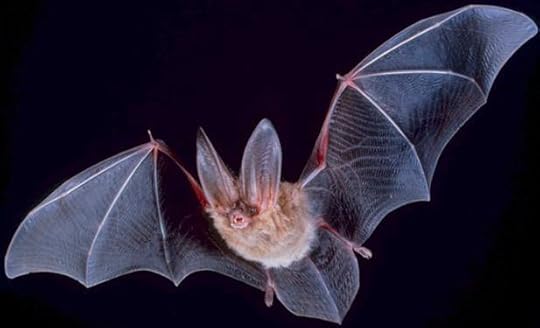 The Townsend's big-eared bat. Credit: https://www.nps.gov/chis/learn/nature... am: Sunlight begins to peek through your window, signaling the start of a new day. Although it emits the yellow band of visible light most strongly, our Sun gives off light in many forms.
The Townsend's big-eared bat. Credit: https://www.nps.gov/chis/learn/nature... am: Sunlight begins to peek through your window, signaling the start of a new day. Although it emits the yellow band of visible light most strongly, our Sun gives off light in many forms. The setting Sun over northeastern Iowa Credit: Thomas DeHoff http://lightexhibit.org/bio_image74.h... am: A microwave oven uses specific wavelengths that excite water molecules, causing heat to build in the food they are meant to warm or cook.
The setting Sun over northeastern Iowa Credit: Thomas DeHoff http://lightexhibit.org/bio_image74.h... am: A microwave oven uses specific wavelengths that excite water molecules, causing heat to build in the food they are meant to warm or cook. The microwave dinner. Credit: TabataAlima cc-by-sa 4.0 https://commons.wikimedia.org/wiki/Fi... am: Stepping out into a sunny day, don’t forget to apply sunscreen. Some, but not all, of the ultraviolet light radiated by the Sun can cause damage to human cells, including skin.
The microwave dinner. Credit: TabataAlima cc-by-sa 4.0 https://commons.wikimedia.org/wiki/Fi... am: Stepping out into a sunny day, don’t forget to apply sunscreen. Some, but not all, of the ultraviolet light radiated by the Sun can cause damage to human cells, including skin.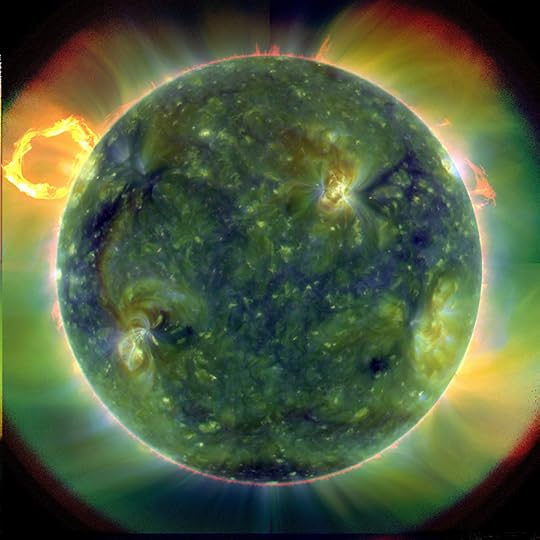 Our Sun in Ultraviolet light. Credit: NASA/SDO http://lightexhibit.org/fulldisk.html... am: On your way to an appointment, you drive over a bridge. Engineers use “industrial radiology” – that is, sending X-rays or gamma rays – to test the strength of things like welds and machined parts.
Our Sun in Ultraviolet light. Credit: NASA/SDO http://lightexhibit.org/fulldisk.html... am: On your way to an appointment, you drive over a bridge. Engineers use “industrial radiology” – that is, sending X-rays or gamma rays – to test the strength of things like welds and machined parts. Golden gate bridge, San Francisco, CA.Credit: public domain.9:00 am: Running late? GPS uses a fleet of orbiting telescopes to send precise, triangulated radio waves to nearly all spots on Earth, delivering valuable time and position information.
Golden gate bridge, San Francisco, CA.Credit: public domain.9:00 am: Running late? GPS uses a fleet of orbiting telescopes to send precise, triangulated radio waves to nearly all spots on Earth, delivering valuable time and position information.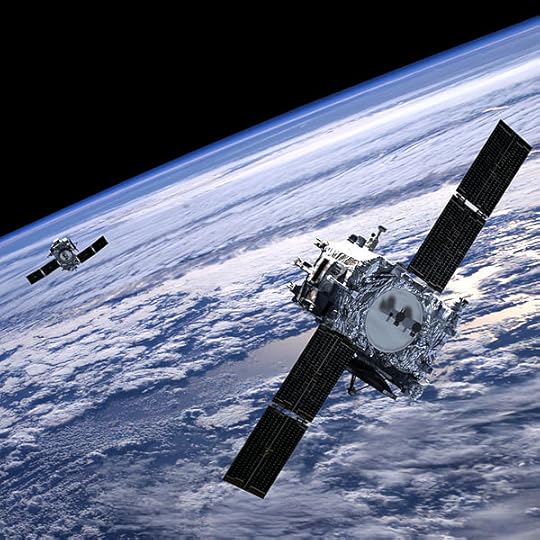 SatellitesCredit: NASA10:00 am: After a quick rainstorm, a rainbow appears in the sky. When sunlight enters a droplet of rain, its path is bent and the multiple colors (red, orange, yellow, green, blue, violet, and indigo) emerge.
SatellitesCredit: NASA10:00 am: After a quick rainstorm, a rainbow appears in the sky. When sunlight enters a droplet of rain, its path is bent and the multiple colors (red, orange, yellow, green, blue, violet, and indigo) emerge.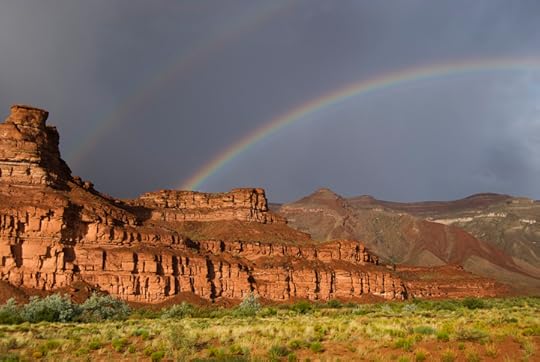 A rainbow above the mesas in Utah.Credit: David Parker/ Science Photo Library http://lightexhibit.org/bio_image8.ht... am: A trip to the dentist brings X-rays. Because it is one of the most energetic forms of light, X-rays can penetrate muscle and tissue, casting shadows on detectors of denser bone and teeth.
A rainbow above the mesas in Utah.Credit: David Parker/ Science Photo Library http://lightexhibit.org/bio_image8.ht... am: A trip to the dentist brings X-rays. Because it is one of the most energetic forms of light, X-rays can penetrate muscle and tissue, casting shadows on detectors of denser bone and teeth. Dental X-rays.Credit: Dmitry G12:00 pm: Checking your email, data streams over fiber optic cables, which are made of strands of glass or plastic that carry emails, videos, photos and more in the form of infrared light.
Dental X-rays.Credit: Dmitry G12:00 pm: Checking your email, data streams over fiber optic cables, which are made of strands of glass or plastic that carry emails, videos, photos and more in the form of infrared light.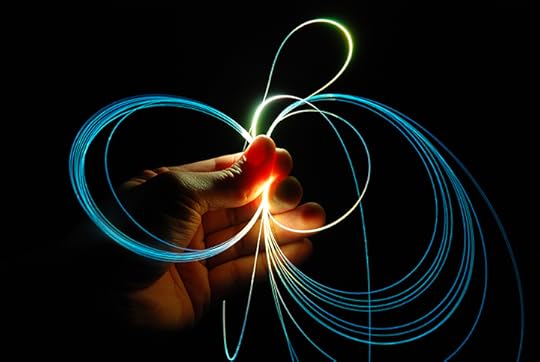 Optical fibers. Credit:Optoelectronics Research Centre, Southampton, UK http://lightexhibit.org/fiber_optics.... pm: With a quick stop at a store, you hand over your credit card to the clerk. On the back is a watermark that only fully reveals itself in ultraviolet light, enhancing security against theft.
Optical fibers. Credit:Optoelectronics Research Centre, Southampton, UK http://lightexhibit.org/fiber_optics.... pm: With a quick stop at a store, you hand over your credit card to the clerk. On the back is a watermark that only fully reveals itself in ultraviolet light, enhancing security against theft. Credit: Harrihealey02 cc-by-sa 3.0 https://commons.wikimedia.org/wiki/Fi... pm: Once outside, you shield your eyes from the light of the Sun with your hand, creating a shadow across your eyes. Almost any type of light can be blocked to generate a shadow.
Credit: Harrihealey02 cc-by-sa 3.0 https://commons.wikimedia.org/wiki/Fi... pm: Once outside, you shield your eyes from the light of the Sun with your hand, creating a shadow across your eyes. Almost any type of light can be blocked to generate a shadow. Credit: pixabay https://pixabay.com/en/beach-person-w... pm: Kaboom! Somewhere in the Universe a black hole is born. Scientists can detect the signature of this event as a powerful blast of gamma rays from space-based telescopes.
Credit: pixabay https://pixabay.com/en/beach-person-w... pm: Kaboom! Somewhere in the Universe a black hole is born. Scientists can detect the signature of this event as a powerful blast of gamma rays from space-based telescopes.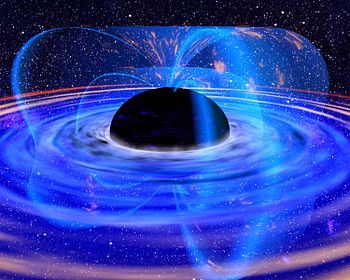 Illustration Credit: XMM-Newton, ESA, NASA - https://web.archive.org/web/201004161... pm: You plug in your smart phone to a solar charger that transforms the energy from sunlight into electricity through photovoltaic cells.
Illustration Credit: XMM-Newton, ESA, NASA - https://web.archive.org/web/201004161... pm: You plug in your smart phone to a solar charger that transforms the energy from sunlight into electricity through photovoltaic cells. Credit: Dennis Schroeder/NREL http://lightexhibit.org/bio_image77.h... pm: Traveling through an airport, you pass through a “millimeter wave scanner” which scans the passengers for concealed objects in a specific band of radio waves.
Credit: Dennis Schroeder/NREL http://lightexhibit.org/bio_image77.h... pm: Traveling through an airport, you pass through a “millimeter wave scanner” which scans the passengers for concealed objects in a specific band of radio waves.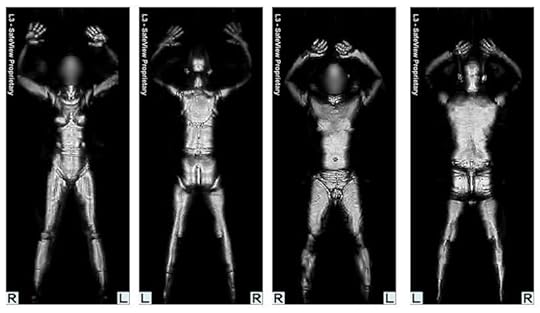 Credit: Transportation Security Administration. https://commons.wikimedia.org/wiki/Fi... pm: As the Sun sets, you notice it looks more oblong shaped than circular. This is due to the bending of the light from the Sun through the thickest
Credit: Transportation Security Administration. https://commons.wikimedia.org/wiki/Fi... pm: As the Sun sets, you notice it looks more oblong shaped than circular. This is due to the bending of the light from the Sun through the thickest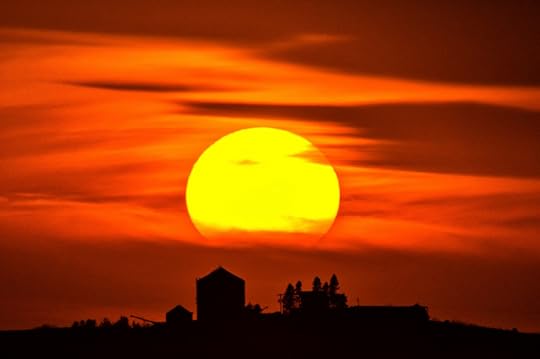 Credit: Thomas DeHoff http://lightexhibit.org/bio_image14.h... pm: A news report describes an earthquake halfway across the globe. Seismologists use radio to learn more about this geological event and hopefully prevent damage and loss of life.
Credit: Thomas DeHoff http://lightexhibit.org/bio_image14.h... pm: A news report describes an earthquake halfway across the globe. Seismologists use radio to learn more about this geological event and hopefully prevent damage and loss of life.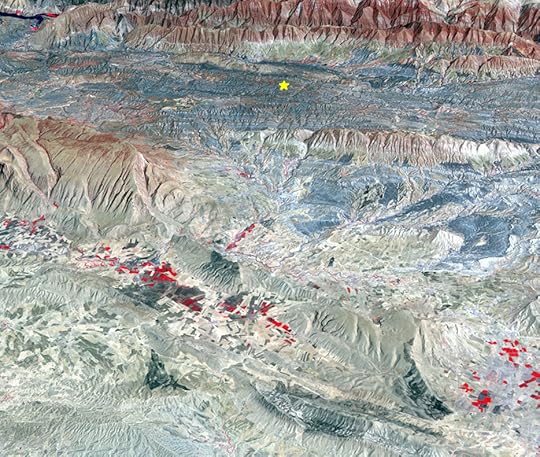 Earthquake at Iran/Iraq border. Credit: NASA/JPL https://www.jpl.nasa.gov/spaceimages/... pm: Fireflies light up a meadow, revealing one of the few species that can generate their own light through “bioluminescence” (most others reflect light from an external source like the Sun).
Earthquake at Iran/Iraq border. Credit: NASA/JPL https://www.jpl.nasa.gov/spaceimages/... pm: Fireflies light up a meadow, revealing one of the few species that can generate their own light through “bioluminescence” (most others reflect light from an external source like the Sun).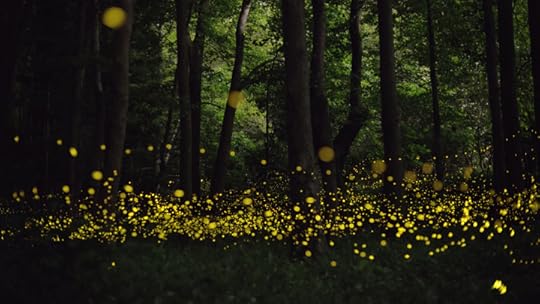 Credit: Tsuneaki Hiramatu http://lightexhibit.org/bio_image3.ht... pm: The neon lights of a diner or the Las Vegas strip work through the collisions of atoms that release light at specific wavelengths or colors.
Credit: Tsuneaki Hiramatu http://lightexhibit.org/bio_image3.ht... pm: The neon lights of a diner or the Las Vegas strip work through the collisions of atoms that release light at specific wavelengths or colors. Credit: Wikimedia Commons - Violetbonmuahttp://hte.si.edu/own.html10:00 pm: As you click on the TV from your bed, the remote control communicates with the television using infrared light.
Credit: Wikimedia Commons - Violetbonmuahttp://hte.si.edu/own.html10:00 pm: As you click on the TV from your bed, the remote control communicates with the television using infrared light. Credit: https://www.publicdomainpictures.net/... pm: Cells called rods in our eyes are responsible for vision at low levels of light, allowing our eyes to collect their final images before we drift off to sleep.
Credit: https://www.publicdomainpictures.net/... pm: Cells called rods in our eyes are responsible for vision at low levels of light, allowing our eyes to collect their final images before we drift off to sleep.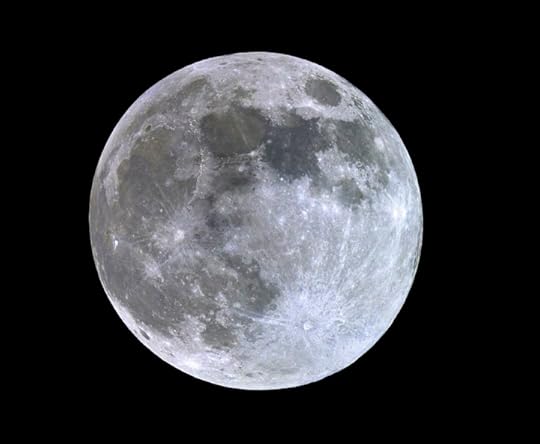 Credit: Jean-Luc Dauvergne/Ciel Et Espace http://lightexhibit.org/bio_image58.h... light, life would not be possible here on Earth. As humanity has learned more about the wonders of light, we have harnessed it in ways that would have been unimaginable just decades ago. Day or night, light and its wonders are all around us.
Credit: Jean-Luc Dauvergne/Ciel Et Espace http://lightexhibit.org/bio_image58.h... light, life would not be possible here on Earth. As humanity has learned more about the wonders of light, we have harnessed it in ways that would have been unimaginable just decades ago. Day or night, light and its wonders are all around us.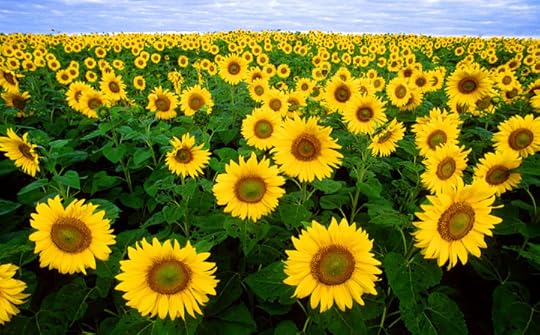 Photosynthesis. Credit: USDA http://lightexhibit.org/bio_image20.html
Photosynthesis. Credit: USDA http://lightexhibit.org/bio_image20.html
 Stardust, Santa Barbara, CaliforniaCredit: Michael Shainblum. More: http://lightexhibit.org/bio_image71.h... am: The cosmos has much more than meets the unaided human eye, however. Most cosmic objects – including stars – emit light in many forms, spanning from radio waves to gamma rays.
Stardust, Santa Barbara, CaliforniaCredit: Michael Shainblum. More: http://lightexhibit.org/bio_image71.h... am: The cosmos has much more than meets the unaided human eye, however. Most cosmic objects – including stars – emit light in many forms, spanning from radio waves to gamma rays. Star cluster NGC 6357. Credit: X-ray: NASA/CXC/PSU/L.Townsley et al; Optical: UKIRT; Infrared: NASA/JPL-Caltech More: http://chandra.si.edu/photo/2016/ngc6... am: As we tucked warmly in our beds asleep, our bodies are radiating heat. This heat is invisible to us, but it is detectable as infrared light by specially-designed cameras.
Star cluster NGC 6357. Credit: X-ray: NASA/CXC/PSU/L.Townsley et al; Optical: UKIRT; Infrared: NASA/JPL-Caltech More: http://chandra.si.edu/photo/2016/ngc6... am: As we tucked warmly in our beds asleep, our bodies are radiating heat. This heat is invisible to us, but it is detectable as infrared light by specially-designed cameras. Much of a person's energy is radiated away in the form of infrared energy. Credit: NASA/IPAC More: http://coolcosmos.ipac.caltech.edu/co... am: As they prepare the early morning weather forecast, meteorologists consult satellite imagery that contains data in microwave light that can penetrate clouds and reveal precipitation.
Much of a person's energy is radiated away in the form of infrared energy. Credit: NASA/IPAC More: http://coolcosmos.ipac.caltech.edu/co... am: As they prepare the early morning weather forecast, meteorologists consult satellite imagery that contains data in microwave light that can penetrate clouds and reveal precipitation. Satellite data of Typhoon Saomai from 2006http://earthobservatory.nasa.gov/Natu... Hal Pierce (SSAI/NASA GSFC).4:00 am: Making their way back their roost, bats catch food by sending out radio waves (which are converted into sound waves) and using the echoes to “see” their prey.
Satellite data of Typhoon Saomai from 2006http://earthobservatory.nasa.gov/Natu... Hal Pierce (SSAI/NASA GSFC).4:00 am: Making their way back their roost, bats catch food by sending out radio waves (which are converted into sound waves) and using the echoes to “see” their prey. The Townsend's big-eared bat. Credit: https://www.nps.gov/chis/learn/nature... am: Sunlight begins to peek through your window, signaling the start of a new day. Although it emits the yellow band of visible light most strongly, our Sun gives off light in many forms.
The Townsend's big-eared bat. Credit: https://www.nps.gov/chis/learn/nature... am: Sunlight begins to peek through your window, signaling the start of a new day. Although it emits the yellow band of visible light most strongly, our Sun gives off light in many forms. The setting Sun over northeastern Iowa Credit: Thomas DeHoff http://lightexhibit.org/bio_image74.h... am: A microwave oven uses specific wavelengths that excite water molecules, causing heat to build in the food they are meant to warm or cook.
The setting Sun over northeastern Iowa Credit: Thomas DeHoff http://lightexhibit.org/bio_image74.h... am: A microwave oven uses specific wavelengths that excite water molecules, causing heat to build in the food they are meant to warm or cook. The microwave dinner. Credit: TabataAlima cc-by-sa 4.0 https://commons.wikimedia.org/wiki/Fi... am: Stepping out into a sunny day, don’t forget to apply sunscreen. Some, but not all, of the ultraviolet light radiated by the Sun can cause damage to human cells, including skin.
The microwave dinner. Credit: TabataAlima cc-by-sa 4.0 https://commons.wikimedia.org/wiki/Fi... am: Stepping out into a sunny day, don’t forget to apply sunscreen. Some, but not all, of the ultraviolet light radiated by the Sun can cause damage to human cells, including skin. Our Sun in Ultraviolet light. Credit: NASA/SDO http://lightexhibit.org/fulldisk.html... am: On your way to an appointment, you drive over a bridge. Engineers use “industrial radiology” – that is, sending X-rays or gamma rays – to test the strength of things like welds and machined parts.
Our Sun in Ultraviolet light. Credit: NASA/SDO http://lightexhibit.org/fulldisk.html... am: On your way to an appointment, you drive over a bridge. Engineers use “industrial radiology” – that is, sending X-rays or gamma rays – to test the strength of things like welds and machined parts. Golden gate bridge, San Francisco, CA.Credit: public domain.9:00 am: Running late? GPS uses a fleet of orbiting telescopes to send precise, triangulated radio waves to nearly all spots on Earth, delivering valuable time and position information.
Golden gate bridge, San Francisco, CA.Credit: public domain.9:00 am: Running late? GPS uses a fleet of orbiting telescopes to send precise, triangulated radio waves to nearly all spots on Earth, delivering valuable time and position information. SatellitesCredit: NASA10:00 am: After a quick rainstorm, a rainbow appears in the sky. When sunlight enters a droplet of rain, its path is bent and the multiple colors (red, orange, yellow, green, blue, violet, and indigo) emerge.
SatellitesCredit: NASA10:00 am: After a quick rainstorm, a rainbow appears in the sky. When sunlight enters a droplet of rain, its path is bent and the multiple colors (red, orange, yellow, green, blue, violet, and indigo) emerge. A rainbow above the mesas in Utah.Credit: David Parker/ Science Photo Library http://lightexhibit.org/bio_image8.ht... am: A trip to the dentist brings X-rays. Because it is one of the most energetic forms of light, X-rays can penetrate muscle and tissue, casting shadows on detectors of denser bone and teeth.
A rainbow above the mesas in Utah.Credit: David Parker/ Science Photo Library http://lightexhibit.org/bio_image8.ht... am: A trip to the dentist brings X-rays. Because it is one of the most energetic forms of light, X-rays can penetrate muscle and tissue, casting shadows on detectors of denser bone and teeth. Dental X-rays.Credit: Dmitry G12:00 pm: Checking your email, data streams over fiber optic cables, which are made of strands of glass or plastic that carry emails, videos, photos and more in the form of infrared light.
Dental X-rays.Credit: Dmitry G12:00 pm: Checking your email, data streams over fiber optic cables, which are made of strands of glass or plastic that carry emails, videos, photos and more in the form of infrared light. Optical fibers. Credit:Optoelectronics Research Centre, Southampton, UK http://lightexhibit.org/fiber_optics.... pm: With a quick stop at a store, you hand over your credit card to the clerk. On the back is a watermark that only fully reveals itself in ultraviolet light, enhancing security against theft.
Optical fibers. Credit:Optoelectronics Research Centre, Southampton, UK http://lightexhibit.org/fiber_optics.... pm: With a quick stop at a store, you hand over your credit card to the clerk. On the back is a watermark that only fully reveals itself in ultraviolet light, enhancing security against theft. Credit: Harrihealey02 cc-by-sa 3.0 https://commons.wikimedia.org/wiki/Fi... pm: Once outside, you shield your eyes from the light of the Sun with your hand, creating a shadow across your eyes. Almost any type of light can be blocked to generate a shadow.
Credit: Harrihealey02 cc-by-sa 3.0 https://commons.wikimedia.org/wiki/Fi... pm: Once outside, you shield your eyes from the light of the Sun with your hand, creating a shadow across your eyes. Almost any type of light can be blocked to generate a shadow. Credit: pixabay https://pixabay.com/en/beach-person-w... pm: Kaboom! Somewhere in the Universe a black hole is born. Scientists can detect the signature of this event as a powerful blast of gamma rays from space-based telescopes.
Credit: pixabay https://pixabay.com/en/beach-person-w... pm: Kaboom! Somewhere in the Universe a black hole is born. Scientists can detect the signature of this event as a powerful blast of gamma rays from space-based telescopes. Illustration Credit: XMM-Newton, ESA, NASA - https://web.archive.org/web/201004161... pm: You plug in your smart phone to a solar charger that transforms the energy from sunlight into electricity through photovoltaic cells.
Illustration Credit: XMM-Newton, ESA, NASA - https://web.archive.org/web/201004161... pm: You plug in your smart phone to a solar charger that transforms the energy from sunlight into electricity through photovoltaic cells. Credit: Dennis Schroeder/NREL http://lightexhibit.org/bio_image77.h... pm: Traveling through an airport, you pass through a “millimeter wave scanner” which scans the passengers for concealed objects in a specific band of radio waves.
Credit: Dennis Schroeder/NREL http://lightexhibit.org/bio_image77.h... pm: Traveling through an airport, you pass through a “millimeter wave scanner” which scans the passengers for concealed objects in a specific band of radio waves. Credit: Transportation Security Administration. https://commons.wikimedia.org/wiki/Fi... pm: As the Sun sets, you notice it looks more oblong shaped than circular. This is due to the bending of the light from the Sun through the thickest
Credit: Transportation Security Administration. https://commons.wikimedia.org/wiki/Fi... pm: As the Sun sets, you notice it looks more oblong shaped than circular. This is due to the bending of the light from the Sun through the thickest Credit: Thomas DeHoff http://lightexhibit.org/bio_image14.h... pm: A news report describes an earthquake halfway across the globe. Seismologists use radio to learn more about this geological event and hopefully prevent damage and loss of life.
Credit: Thomas DeHoff http://lightexhibit.org/bio_image14.h... pm: A news report describes an earthquake halfway across the globe. Seismologists use radio to learn more about this geological event and hopefully prevent damage and loss of life. Earthquake at Iran/Iraq border. Credit: NASA/JPL https://www.jpl.nasa.gov/spaceimages/... pm: Fireflies light up a meadow, revealing one of the few species that can generate their own light through “bioluminescence” (most others reflect light from an external source like the Sun).
Earthquake at Iran/Iraq border. Credit: NASA/JPL https://www.jpl.nasa.gov/spaceimages/... pm: Fireflies light up a meadow, revealing one of the few species that can generate their own light through “bioluminescence” (most others reflect light from an external source like the Sun). Credit: Tsuneaki Hiramatu http://lightexhibit.org/bio_image3.ht... pm: The neon lights of a diner or the Las Vegas strip work through the collisions of atoms that release light at specific wavelengths or colors.
Credit: Tsuneaki Hiramatu http://lightexhibit.org/bio_image3.ht... pm: The neon lights of a diner or the Las Vegas strip work through the collisions of atoms that release light at specific wavelengths or colors. Credit: Wikimedia Commons - Violetbonmuahttp://hte.si.edu/own.html10:00 pm: As you click on the TV from your bed, the remote control communicates with the television using infrared light.
Credit: Wikimedia Commons - Violetbonmuahttp://hte.si.edu/own.html10:00 pm: As you click on the TV from your bed, the remote control communicates with the television using infrared light. Credit: https://www.publicdomainpictures.net/... pm: Cells called rods in our eyes are responsible for vision at low levels of light, allowing our eyes to collect their final images before we drift off to sleep.
Credit: https://www.publicdomainpictures.net/... pm: Cells called rods in our eyes are responsible for vision at low levels of light, allowing our eyes to collect their final images before we drift off to sleep. Credit: Jean-Luc Dauvergne/Ciel Et Espace http://lightexhibit.org/bio_image58.h... light, life would not be possible here on Earth. As humanity has learned more about the wonders of light, we have harnessed it in ways that would have been unimaginable just decades ago. Day or night, light and its wonders are all around us.
Credit: Jean-Luc Dauvergne/Ciel Et Espace http://lightexhibit.org/bio_image58.h... light, life would not be possible here on Earth. As humanity has learned more about the wonders of light, we have harnessed it in ways that would have been unimaginable just decades ago. Day or night, light and its wonders are all around us. Photosynthesis. Credit: USDA http://lightexhibit.org/bio_image20.html
Photosynthesis. Credit: USDA http://lightexhibit.org/bio_image20.html
Published on May 14, 2018 13:13
March 23, 2018
Switch off your lights (for a while) for Earth Hour
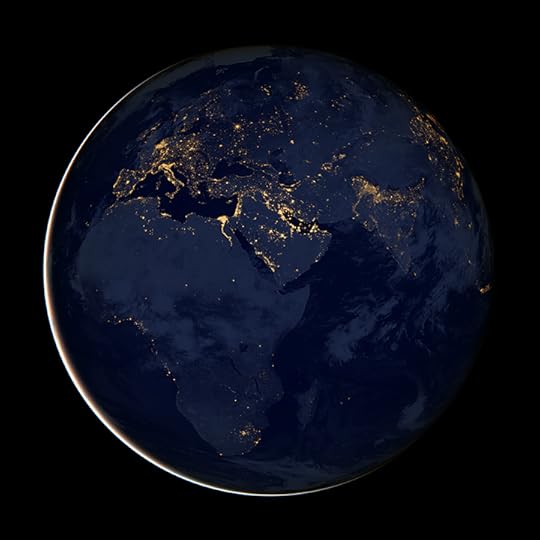 The Earth at night. Credit: NASAOn Saturday, March 24th, between 8:30 and 9:30 pm local time, people around the globe will shut off their lights to participate in Earth Hour. The idea behind it is to “switch off lights and make noise for the Earth,” to highlight climate change and other challenges facing our fragile planet.By using “light” for centerpiece this event, the organizers have picked something that represents both a problem and a potential solution for some the world’s most pressing issues.
The Earth at night. Credit: NASAOn Saturday, March 24th, between 8:30 and 9:30 pm local time, people around the globe will shut off their lights to participate in Earth Hour. The idea behind it is to “switch off lights and make noise for the Earth,” to highlight climate change and other challenges facing our fragile planet.By using “light” for centerpiece this event, the organizers have picked something that represents both a problem and a potential solution for some the world’s most pressing issues. 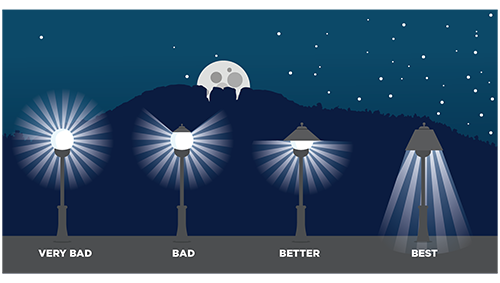 For tips on improving outdoor lighting near year, see these helpful infographics from the city of Fort Collins. Credit: City of Fort CollinsFor example, we are burning through finite fossil fuels that contributed to Earth’s warming in the quest to generate electricity, which powers our light bulbs and other forms of illumination. Moreover, much of the light that is created is underutilized and irresponsibly wasted through “light pollution.” Poorly designed lighting not only erases the beauty of the night sky, it squanders an enormous amount of energy.
For tips on improving outdoor lighting near year, see these helpful infographics from the city of Fort Collins. Credit: City of Fort CollinsFor example, we are burning through finite fossil fuels that contributed to Earth’s warming in the quest to generate electricity, which powers our light bulbs and other forms of illumination. Moreover, much of the light that is created is underutilized and irresponsibly wasted through “light pollution.” Poorly designed lighting not only erases the beauty of the night sky, it squanders an enormous amount of energy.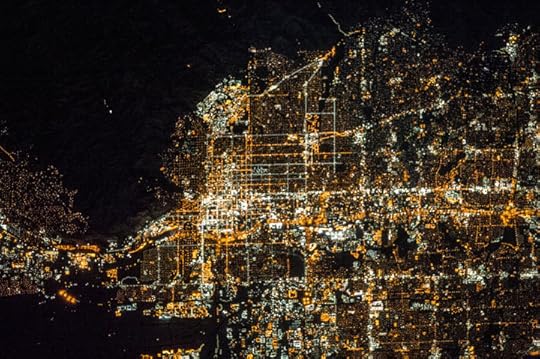 Light defines our modern cities in many ways, as seen here in this photograph of Salt Lake City, Utah taken from astronauts about the International Space Station. Credit: NASA/Johnson Space Center This statistic from the International Dark-Sky Association underscores just how much we waste in the pursuit of light: “In an average year in the U.S. alone, outdoor lighting uses about 120 terawatt-hours of energy, mostly to illuminate streets and parking lots. That’s enough energy to meet New York City’s total electricity needs for two years!”Light, however, is important and artificial forms of it can lead to advances in health, security, productivity, and much more. By mindfully harnessing the power of light in its many forms, we can make the world a better place. While we often don’t think of light in this way, it comes in many forms from radio waves and infrared through X-rays and gamma rays. These various types of light make communication, medical imaging, information technology and much more possible.
Light defines our modern cities in many ways, as seen here in this photograph of Salt Lake City, Utah taken from astronauts about the International Space Station. Credit: NASA/Johnson Space Center This statistic from the International Dark-Sky Association underscores just how much we waste in the pursuit of light: “In an average year in the U.S. alone, outdoor lighting uses about 120 terawatt-hours of energy, mostly to illuminate streets and parking lots. That’s enough energy to meet New York City’s total electricity needs for two years!”Light, however, is important and artificial forms of it can lead to advances in health, security, productivity, and much more. By mindfully harnessing the power of light in its many forms, we can make the world a better place. While we often don’t think of light in this way, it comes in many forms from radio waves and infrared through X-rays and gamma rays. These various types of light make communication, medical imaging, information technology and much more possible. Solar panels allow us to harness some of the vast energy that is provided to us every day from the Sun. Many people consider solar power as one of the most promising sources of renewable energy. Credit: Dennis Schroeder/NRELWhile there are countless ways we use light throughout our day, perhaps the most important role that light might play for the future of our planet is the harnessing of its energy. Even with the growing human population, the Sun still outputs far more energy every year than the world consumes. Photovoltaic cells in today’s solar panels convert light from he Sun into electricity using semiconducting material such as silicon. There are many hurdles that remain in order for solar power (and other renewable forms of energy) to take over from fossil fuels, but those challenges are not insurmountable. By increasing efficiency and storage capabilities and lowering costs and access, we could make solar power a viable source of clean energy for much, if not all, of the planet. If we consume less, think creatively, and invest wisely, there is no telling what we can achieve and light might help show us the way.
Solar panels allow us to harness some of the vast energy that is provided to us every day from the Sun. Many people consider solar power as one of the most promising sources of renewable energy. Credit: Dennis Schroeder/NRELWhile there are countless ways we use light throughout our day, perhaps the most important role that light might play for the future of our planet is the harnessing of its energy. Even with the growing human population, the Sun still outputs far more energy every year than the world consumes. Photovoltaic cells in today’s solar panels convert light from he Sun into electricity using semiconducting material such as silicon. There are many hurdles that remain in order for solar power (and other renewable forms of energy) to take over from fossil fuels, but those challenges are not insurmountable. By increasing efficiency and storage capabilities and lowering costs and access, we could make solar power a viable source of clean energy for much, if not all, of the planet. If we consume less, think creatively, and invest wisely, there is no telling what we can achieve and light might help show us the way. 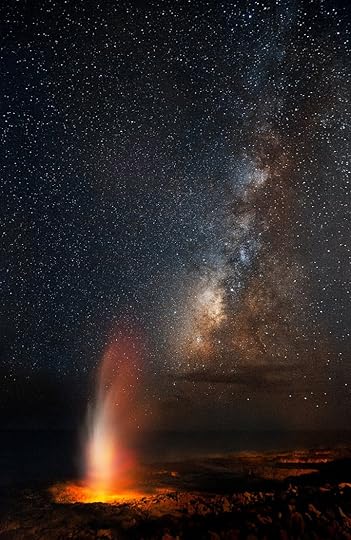 Behind the glow of an active volcano, the beautiful starry skies can be seen from a dark site in Hawaii. Unfortunately, light pollution from poorly designed and inefficient lighting is taking away these wonderful cosmic views from most people. Light pollution is so common only a handful of the very brightest stars can be seen from the ground in most urban and suburban environments. Credit: Rogelio Bernal Andreo/DeepSkyColors.com/Ciel et EspaceMegan Watzke and Kim Arcand are so fascinated with light that they wrote an entire book on it. “Light: The Visible Spectrum and Beyond” is available via online retailers and many independent bookstores. More on this and their other popular science books can be found at http://arcandwatzke.com/books
Behind the glow of an active volcano, the beautiful starry skies can be seen from a dark site in Hawaii. Unfortunately, light pollution from poorly designed and inefficient lighting is taking away these wonderful cosmic views from most people. Light pollution is so common only a handful of the very brightest stars can be seen from the ground in most urban and suburban environments. Credit: Rogelio Bernal Andreo/DeepSkyColors.com/Ciel et EspaceMegan Watzke and Kim Arcand are so fascinated with light that they wrote an entire book on it. “Light: The Visible Spectrum and Beyond” is available via online retailers and many independent bookstores. More on this and their other popular science books can be found at http://arcandwatzke.com/books
Published on March 23, 2018 07:53
February 7, 2018
Sizing Up the Olympics
 Closing Ceremony for the Sochi 2014 Winter Olympic GamesCredit: Korea.net / Korean Culture and Information Service (Korean Olympic Committee) CC BY-SA 2.0The next round of the Winter Olympic Games will occur between February 9th and 29th in PyeongChang, Korea. This is, of course, a chance for the world’s best athletes to compete against one another and for the rest of us to marvel at their abilities.But instead of just comparing the accomplishments of one to the other, what about taking a look at how the Olympics measure up against science and nature?DISTANCE:
Closing Ceremony for the Sochi 2014 Winter Olympic GamesCredit: Korea.net / Korean Culture and Information Service (Korean Olympic Committee) CC BY-SA 2.0The next round of the Winter Olympic Games will occur between February 9th and 29th in PyeongChang, Korea. This is, of course, a chance for the world’s best athletes to compete against one another and for the rest of us to marvel at their abilities.But instead of just comparing the accomplishments of one to the other, what about taking a look at how the Olympics measure up against science and nature?DISTANCE: Left: Track, Katie Peek. Middle: 2010 Winter Olympics leading group in the Nordic combined, 10km, Kevin Pedraja/Seattle, USA, CC BY-SA 2.0; Right: Earth, Katie PeekWhile the Summer Games feature several long distance events (marathon, 250-km cycling, triathlon, etc.), the distances are generally shorter for the Winter Games. That said, there are still some very grueling events that would make most mortals despair. In particular, we are thinking of the 30-km and 50-km cross-country, or Nordic, skiing competitions for women and men respectively.Compare!Track in Lane 1: 400 mOlympic cross-country skiing event: 50,000 mShortest crossing of the Atlantic Ocean: 2,600,000 mMASS:
Left: Track, Katie Peek. Middle: 2010 Winter Olympics leading group in the Nordic combined, 10km, Kevin Pedraja/Seattle, USA, CC BY-SA 2.0; Right: Earth, Katie PeekWhile the Summer Games feature several long distance events (marathon, 250-km cycling, triathlon, etc.), the distances are generally shorter for the Winter Games. That said, there are still some very grueling events that would make most mortals despair. In particular, we are thinking of the 30-km and 50-km cross-country, or Nordic, skiing competitions for women and men respectively.Compare!Track in Lane 1: 400 mOlympic cross-country skiing event: 50,000 mShortest crossing of the Atlantic Ocean: 2,600,000 mMASS: Left: DNA, Katie Peek; Middle: Helen Glover with her 2012 Olympic Gold medal, Thomaswwp, CC BY-SA 3.0; Right: Golden Retriever, Katie PeekThe Games in PyeongChang will include the heaviest weighing medals ever. Winners at these 2018 Games will receive a gold at 586 grams, silver at 580 grams, and bronze at 493 grams. In case you didn’t know, the medals are never pure gold, silver or bronze, but must meet certain standards and amounts for ratios of the precious metals. The host city’s organizing committee then decides the medals’ exact composition.Compare!DNA in a Human Cell: 6x10^-15 kgOlympic Gold in PyeongChang: 0.586 kgAdult Golden Retriever: 36 kg SPEED:
Left: DNA, Katie Peek; Middle: Helen Glover with her 2012 Olympic Gold medal, Thomaswwp, CC BY-SA 3.0; Right: Golden Retriever, Katie PeekThe Games in PyeongChang will include the heaviest weighing medals ever. Winners at these 2018 Games will receive a gold at 586 grams, silver at 580 grams, and bronze at 493 grams. In case you didn’t know, the medals are never pure gold, silver or bronze, but must meet certain standards and amounts for ratios of the precious metals. The host city’s organizing committee then decides the medals’ exact composition.Compare!DNA in a Human Cell: 6x10^-15 kgOlympic Gold in PyeongChang: 0.586 kgAdult Golden Retriever: 36 kg SPEED: Left: Cheetah, Katie Peek; Middle: Andrej Šporn at the 2010 Winter Olympic downhill, Jon Wick, CC BY-SA 2.0; Right: Sound waves, Katie PeekWhen downhill skiers get going, watch out. The top speed in an official downhill event like those in the Olympics has been clocked around 95 mph (about 150 km/hr) or 42 m/s. We don’t even feel safe driving in a car at that speed, let alone flying down an icy mountain strapped to two skinny, slippery boards.Compare!Fastest Land Animal (cheetah): 27 m/sTop downhill speed: 42 m/sSpeed of Sound: 343 m/sACCELERATION:
Left: Cheetah, Katie Peek; Middle: Andrej Šporn at the 2010 Winter Olympic downhill, Jon Wick, CC BY-SA 2.0; Right: Sound waves, Katie PeekWhen downhill skiers get going, watch out. The top speed in an official downhill event like those in the Olympics has been clocked around 95 mph (about 150 km/hr) or 42 m/s. We don’t even feel safe driving in a car at that speed, let alone flying down an icy mountain strapped to two skinny, slippery boards.Compare!Fastest Land Animal (cheetah): 27 m/sTop downhill speed: 42 m/sSpeed of Sound: 343 m/sACCELERATION: Left: Jupiter, Katie Peek; Middle: United States goaltender Ryan Miller in US versus Canada, 2010 Winter Olympics, Leech44 CC BY-SA 2.0; Right: Human limit test, Katie PeekThe term acceleration most often refers to an object increasing in speed. In fact, acceleration is defined as both any change to the amount of speed -- both faster and slower -- but also in the direction of an object’s motion. (Think of the pull you feel going around the corner on a roller coaster.) In the Olympics, as with many sports, the ability to change directions and speeds is crucial.Compare!Gravity at Jupiter’s surface: 23.1 m/s^2Slapshot in hockey: 1,230 m/s^2Record for human limit: 453 m/s^2 ** Colonel John Paul Stapp was a US Air Force pilot who wanted to test how much acceleration the human body could endure. In 1954, Stapp rode a decelerator sled that caused him to experience over 46 times the “g” force, defying the medical community’s consensus of what was possible.ROTATION:
Left: Jupiter, Katie Peek; Middle: United States goaltender Ryan Miller in US versus Canada, 2010 Winter Olympics, Leech44 CC BY-SA 2.0; Right: Human limit test, Katie PeekThe term acceleration most often refers to an object increasing in speed. In fact, acceleration is defined as both any change to the amount of speed -- both faster and slower -- but also in the direction of an object’s motion. (Think of the pull you feel going around the corner on a roller coaster.) In the Olympics, as with many sports, the ability to change directions and speeds is crucial.Compare!Gravity at Jupiter’s surface: 23.1 m/s^2Slapshot in hockey: 1,230 m/s^2Record for human limit: 453 m/s^2 ** Colonel John Paul Stapp was a US Air Force pilot who wanted to test how much acceleration the human body could endure. In 1954, Stapp rode a decelerator sled that caused him to experience over 46 times the “g” force, defying the medical community’s consensus of what was possible.ROTATION: Left: Washing machine, clipart; Middle: Yuna Kim spins on ice, Flickr;Right: Race track, Katie PeekThe idea of rotation, that is, how fast something is spinning around an axis, can be found everywhere from children’s merry go rounds to washing machines. Rotation is also extremely important in many Olympic sports including freestyle skiing and snowboarding. Perhaps the quintessential rotation example in sports, however, is in ice skating where Olympic and professional skaters perform spins at vertigo-inducing spins (at least for us non-skaters).Compare!Ice Skater’s Spin: 5 Hz*Washing Machine: 20 Hz *Crankshaft in Formula One engine: 250 Hz* The unit of Hz, or Hertz, measures one revolution per second. Perhaps a more familiar unit for most in rotation – at least for car enthusiasts – is the RPM, which stands for “revolutions per minute.”PRESSURE:
Left: Washing machine, clipart; Middle: Yuna Kim spins on ice, Flickr;Right: Race track, Katie PeekThe idea of rotation, that is, how fast something is spinning around an axis, can be found everywhere from children’s merry go rounds to washing machines. Rotation is also extremely important in many Olympic sports including freestyle skiing and snowboarding. Perhaps the quintessential rotation example in sports, however, is in ice skating where Olympic and professional skaters perform spins at vertigo-inducing spins (at least for us non-skaters).Compare!Ice Skater’s Spin: 5 Hz*Washing Machine: 20 Hz *Crankshaft in Formula One engine: 250 Hz* The unit of Hz, or Hertz, measures one revolution per second. Perhaps a more familiar unit for most in rotation – at least for car enthusiasts – is the RPM, which stands for “revolutions per minute.”PRESSURE: Left: Blood pressure, Katie Peek; Middle: Olympic medalist speed skater Shani Davis, Getty Images; Right: Karate strike, Katie Peek.We will all hear the term “pressure” a lot during the Olympic Games. In sports, it refers to a high stress situation. The definition of pressure in science is much more specific. It means the amount of force over a certain area. Think of pushing your palm into a wall. It generally doesn’t go through. Use that same force on a thumbtack and it will go right in. That’s because the force has been concentrated onto a much smaller area, in this case the head of a pin.Compare!Average Human Blood Pressure: 100,000 pascalsSpeed Skater on Ice: 1,000,000 pascals *Karate First Strike: 90 million pascals* The amount of pressure exerted by the skater’s blade onto the ice depends on the weight of the skater and the length and width of the blade.The athletes in the Olympics can do amazing things, but perhaps more fascinating is what happens every day in science, nature, and technology all around us.This article was cross posted to Medium.Megan Watzke and Kimberly Arcand are the co-authors of “Magnitude: The Scale of the Universe” (https://www.amazon.com/Magnitude-Scale-Universe-Megan-Watzke/dp/031650291X/) now available wherever books are sold. This illustrated book takes readers on a journey to explore the lightest and heaviest, fastest and slowest, hottest and coldest, largest and smallest, loudest and quietest phenomena in the Universe.
Left: Blood pressure, Katie Peek; Middle: Olympic medalist speed skater Shani Davis, Getty Images; Right: Karate strike, Katie Peek.We will all hear the term “pressure” a lot during the Olympic Games. In sports, it refers to a high stress situation. The definition of pressure in science is much more specific. It means the amount of force over a certain area. Think of pushing your palm into a wall. It generally doesn’t go through. Use that same force on a thumbtack and it will go right in. That’s because the force has been concentrated onto a much smaller area, in this case the head of a pin.Compare!Average Human Blood Pressure: 100,000 pascalsSpeed Skater on Ice: 1,000,000 pascals *Karate First Strike: 90 million pascals* The amount of pressure exerted by the skater’s blade onto the ice depends on the weight of the skater and the length and width of the blade.The athletes in the Olympics can do amazing things, but perhaps more fascinating is what happens every day in science, nature, and technology all around us.This article was cross posted to Medium.Megan Watzke and Kimberly Arcand are the co-authors of “Magnitude: The Scale of the Universe” (https://www.amazon.com/Magnitude-Scale-Universe-Megan-Watzke/dp/031650291X/) now available wherever books are sold. This illustrated book takes readers on a journey to explore the lightest and heaviest, fastest and slowest, hottest and coldest, largest and smallest, loudest and quietest phenomena in the Universe.
Published on February 07, 2018 07:53
December 19, 2017
Energy: How Much Really?
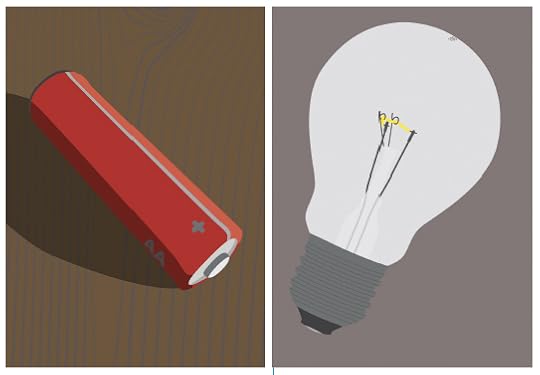 Most of us probably think of energy a quite a bit. We comment on how much energy we are feeling or lacking, etc. Perhaps we give some extra consideration to the concept of energy when our monthly bill from the utility company arrives. On a larger scale, we may worry about how our energy consumption as a species is affecting our planet’s well being. (Hint: not well.)To give some perspective, we can look at a handful of everyday experiences or behaviors and their actual energy consumption. Think of this as a particular activity’s “energy cost” for occurring. You can use this information to help make informed decisions about what you do – and don’t do – throughout your life.It’s important to note that energy exists in many different forms – ranging from kinetic (the energy of motion) to electrical to chemical and more. One form of energy can be compared to another if it’s calculated in the same units. Although we might be used to thinking of energy in terms of calories (food) or, perhaps, kilowatt-hour (electricity usage), here we look at energy in the internationally accepted units of the joule (J), where the joule is a quantification of heat, which is essentially energy, or “work,” as energy can be thought of as the ability of someone or something to do work. A joule equals the amount of work done by a force of one newton acting through a distance of one meter, in the direction of the force. (A newton is a unit of force that was named after Sir Isaac Newton because of his work on the second law of motion. A newton is the amount of force needed to accelerate an object with a mass of 1 kilogram 1 meter per second per second.)AA battery: 1,000 JOne hour of light from a 100-watt incandescent light bulb: 360,000 JCycling steadily for one hour: 2,000,000 J [1]Typical fast food meal: 3,500,000 JOne Bitcoin transaction: 9,000,000 J [2]Idling in a drive-thru lane: 36,000,000 JAverage US household electricity consumption for 2016: 39,000,000,000 J[3]Bitcoin transactions per year: 120,000,000,000,000,000 J [4]Rain released from a hurricane over one day: 50,000,000,000,000,000,000 JSun over one hour: 1,400,000,000,000,000,000,000,000,000,000 J
Most of us probably think of energy a quite a bit. We comment on how much energy we are feeling or lacking, etc. Perhaps we give some extra consideration to the concept of energy when our monthly bill from the utility company arrives. On a larger scale, we may worry about how our energy consumption as a species is affecting our planet’s well being. (Hint: not well.)To give some perspective, we can look at a handful of everyday experiences or behaviors and their actual energy consumption. Think of this as a particular activity’s “energy cost” for occurring. You can use this information to help make informed decisions about what you do – and don’t do – throughout your life.It’s important to note that energy exists in many different forms – ranging from kinetic (the energy of motion) to electrical to chemical and more. One form of energy can be compared to another if it’s calculated in the same units. Although we might be used to thinking of energy in terms of calories (food) or, perhaps, kilowatt-hour (electricity usage), here we look at energy in the internationally accepted units of the joule (J), where the joule is a quantification of heat, which is essentially energy, or “work,” as energy can be thought of as the ability of someone or something to do work. A joule equals the amount of work done by a force of one newton acting through a distance of one meter, in the direction of the force. (A newton is a unit of force that was named after Sir Isaac Newton because of his work on the second law of motion. A newton is the amount of force needed to accelerate an object with a mass of 1 kilogram 1 meter per second per second.)AA battery: 1,000 JOne hour of light from a 100-watt incandescent light bulb: 360,000 JCycling steadily for one hour: 2,000,000 J [1]Typical fast food meal: 3,500,000 JOne Bitcoin transaction: 9,000,000 J [2]Idling in a drive-thru lane: 36,000,000 JAverage US household electricity consumption for 2016: 39,000,000,000 J[3]Bitcoin transactions per year: 120,000,000,000,000,000 J [4]Rain released from a hurricane over one day: 50,000,000,000,000,000,000 JSun over one hour: 1,400,000,000,000,000,000,000,000,000,000 J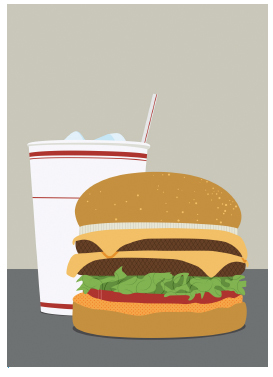 You can peruse these numbers and come to your own conclusions about your own habits. For example, notice that the same amount of energy that you use up sitting in a car waiting for a fast food meal is the same as biking steadily for 18 hours. What other kinds of comparisons can you make?A quick note: the motivation for this piece came from Pete Adeney, a.k.a., Mr. Money Mustache, who supplied a couple of these figures for the comparisons.Finally, you’ll notice that these numbers get really big really quickly. It’s kind of difficult to keep track of the amount of zeroes in the quantity of Bitcoin transactions per year, as just one example. That’s why it’s so helpful to become comfortable with scientific notation. It can save all of our sanity in keeping track of a hoard of zeroes, and can also help cut to the chase of countless tidbits of information that stream toward us every day more quickly and efficiently.Megan Watzke and Kimberly Arcand are the co-authors of “Magnitude: The Scale of the Universe”. This illustrated book takes readers on a journey to explore the lightest and heaviest, fastest and slowest, hottest and coldest, largest and smallest, loudest and quietest phenomena in the Universe. Many of the examples listed above come from this book’s chapter on energy.Notes:[1] https://cyclinguphill.com/energy-consumption-whilst-cycling/[2] Digiconimist: https://digiconomist.net/bitcoin-energy-consumption[3] U.S. Energy Information Administration https://www.eia.gov/tools/faqs/faq.php?id=97&t=3[4] Digiconimist: https://digiconomist.net/bitcoin-energy-consumptionIllustrations by Katie Peek, excerpted from "Magnitude: The Scale of the Universe"
You can peruse these numbers and come to your own conclusions about your own habits. For example, notice that the same amount of energy that you use up sitting in a car waiting for a fast food meal is the same as biking steadily for 18 hours. What other kinds of comparisons can you make?A quick note: the motivation for this piece came from Pete Adeney, a.k.a., Mr. Money Mustache, who supplied a couple of these figures for the comparisons.Finally, you’ll notice that these numbers get really big really quickly. It’s kind of difficult to keep track of the amount of zeroes in the quantity of Bitcoin transactions per year, as just one example. That’s why it’s so helpful to become comfortable with scientific notation. It can save all of our sanity in keeping track of a hoard of zeroes, and can also help cut to the chase of countless tidbits of information that stream toward us every day more quickly and efficiently.Megan Watzke and Kimberly Arcand are the co-authors of “Magnitude: The Scale of the Universe”. This illustrated book takes readers on a journey to explore the lightest and heaviest, fastest and slowest, hottest and coldest, largest and smallest, loudest and quietest phenomena in the Universe. Many of the examples listed above come from this book’s chapter on energy.Notes:[1] https://cyclinguphill.com/energy-consumption-whilst-cycling/[2] Digiconimist: https://digiconomist.net/bitcoin-energy-consumption[3] U.S. Energy Information Administration https://www.eia.gov/tools/faqs/faq.php?id=97&t=3[4] Digiconimist: https://digiconomist.net/bitcoin-energy-consumptionIllustrations by Katie Peek, excerpted from "Magnitude: The Scale of the Universe"
Published on December 19, 2017 13:04
December 6, 2017
Best of 2017 Lists!
We are so incredibly honored for "Magnitude: The Scale of the Universe" to be selected as one of the Smithsonian Magazine's Ten Best Science Books of 2017, as well as BuzzFeed's This Year's Best Books! Many, many thanks to them for including us in such fantastic lists full of high quality books. If you're looking for more books to add to your library, or if you need a holiday gift idea, check out these two collections of some of the most interesting reads from 2017. From Neil deGrasse Tyson's latest astrophysics tome, to Helen Czerski's physics of the everyday, we're sure you'll find some fantastic reads to dive into. 

Published on December 06, 2017 13:10
November 20, 2017
The Lightest, Heaviest, Fastest, Slowest, Hottest, Coldest, Largest, Smallest...
Understanding scale, or magnitude, is essential for making informed decisions in modern society today. Is that figure just quoted by a politician a lot or a little? Did the news just report something incredibly important or within the range of normal?We wrote “Magnitude: The Scale of the Universe” (newly released this month!) to help all of us better navigate our complex world. Below we excerpt a few fun facts and illustrations from just some of the topics covered in our latest book. Whether it's the lightest or heaviest, fastest or slowest, hottest or coldest, largest or smallest, we've got you covered. DISTANCE: The longest bridge in the world is 400 times longer than the inside lane of a standard running track. 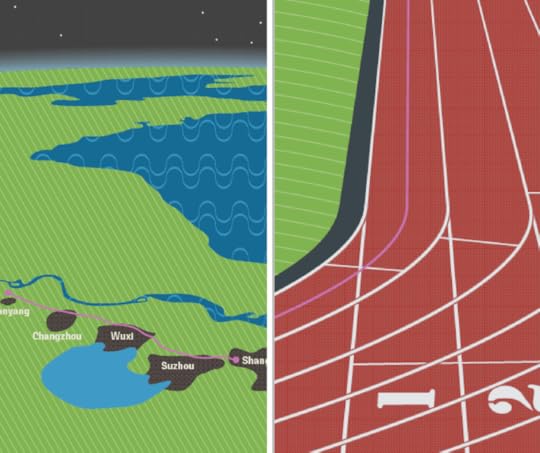 AREA: The area of a tennis ball is 100,000,000 times that of a human red blood cell.
AREA: The area of a tennis ball is 100,000,000 times that of a human red blood cell. 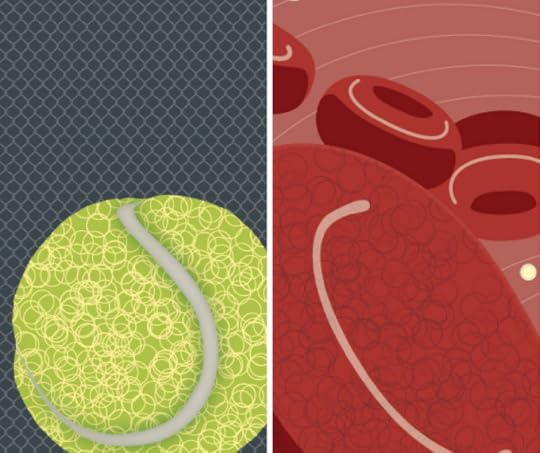 VOLUME: Soccer balls are about 4 times the volume of the adult human brain.
VOLUME: Soccer balls are about 4 times the volume of the adult human brain. 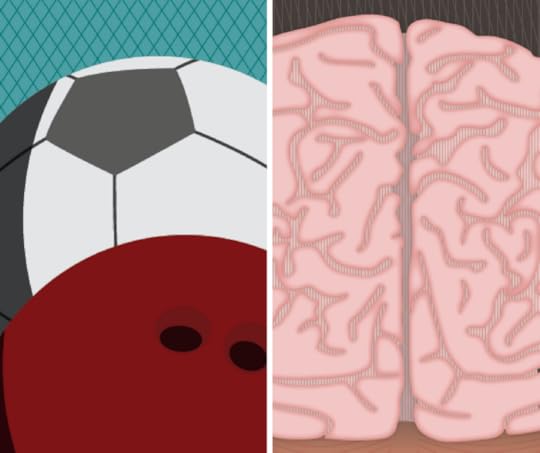 MASS: A molecule of DNA has approximately 7 million billion times the mass of an electron
MASS: A molecule of DNA has approximately 7 million billion times the mass of an electron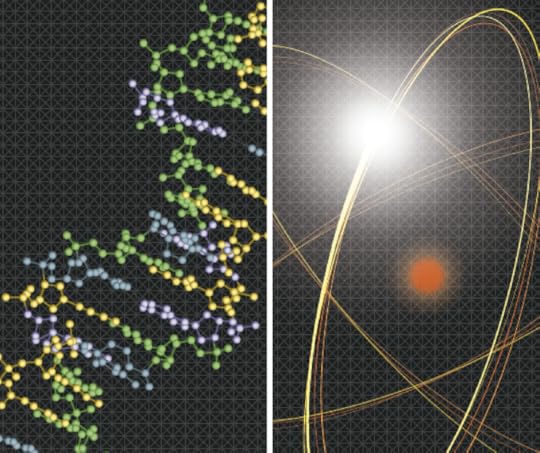 TEMPERATURE: Melting gold is 4 times hotter than the average human body.
TEMPERATURE: Melting gold is 4 times hotter than the average human body. 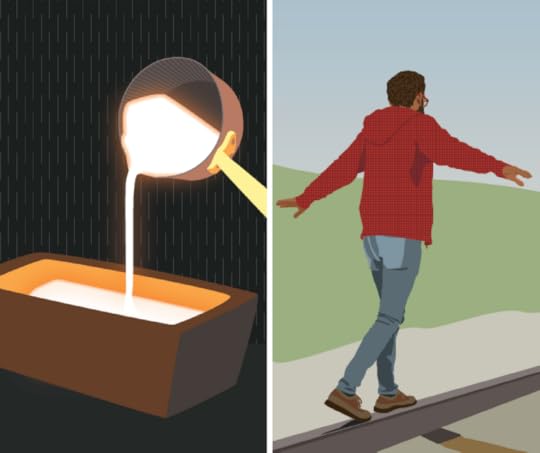 SPEED: Don’t let grass grow under your feet: you can walk about 70 million times faster than grass can grow.
SPEED: Don’t let grass grow under your feet: you can walk about 70 million times faster than grass can grow. 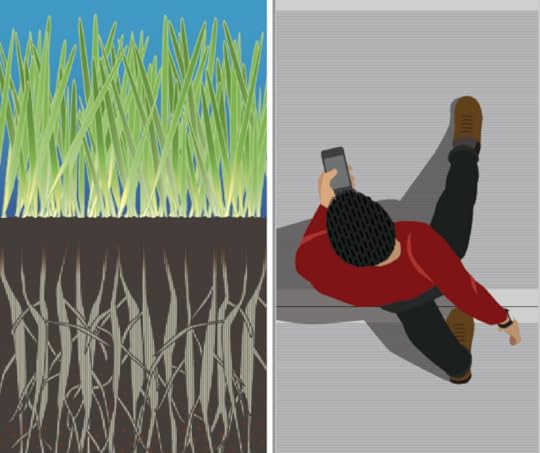 DENSITY: The heaviest elements on the periodic table are about 3 times denser than gold.
DENSITY: The heaviest elements on the periodic table are about 3 times denser than gold.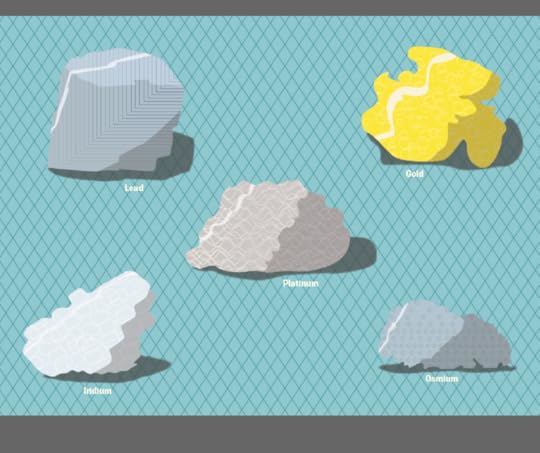 ROTATION: Most ceiling fans rotate 40,000 times faster than the Earth rotates.
ROTATION: Most ceiling fans rotate 40,000 times faster than the Earth rotates.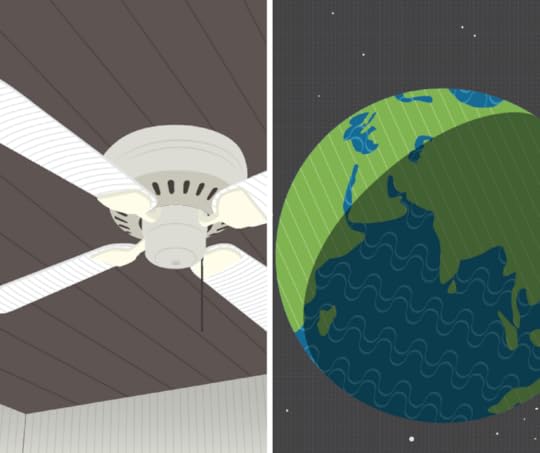 TIME: Nothing lasts forever. One U.S. presidential term lasts 126 million seconds. How do humans relate to time? This illustration shows the difference between a million, billion and trillion seconds.
TIME: Nothing lasts forever. One U.S. presidential term lasts 126 million seconds. How do humans relate to time? This illustration shows the difference between a million, billion and trillion seconds. 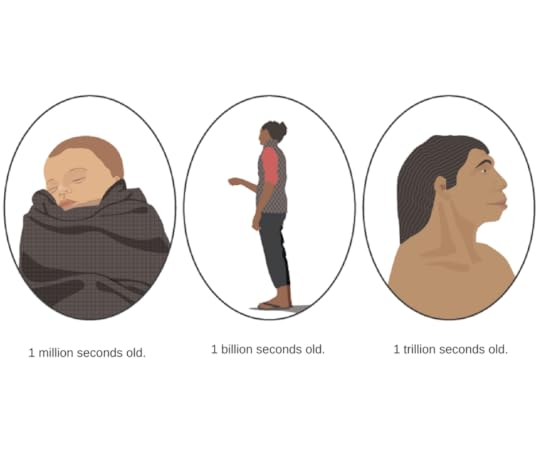 Love,MagnitudeIllustrations by Katie Peek. "Magnitude: The Scale of the Universe" is now out, and listed as a #1 New Release on Amazon. Visit Barnes & Noble, Amazonor the Indie bookseller of your choice to purchase.
Love,MagnitudeIllustrations by Katie Peek. "Magnitude: The Scale of the Universe" is now out, and listed as a #1 New Release on Amazon. Visit Barnes & Noble, Amazonor the Indie bookseller of your choice to purchase.
 AREA: The area of a tennis ball is 100,000,000 times that of a human red blood cell.
AREA: The area of a tennis ball is 100,000,000 times that of a human red blood cell.  VOLUME: Soccer balls are about 4 times the volume of the adult human brain.
VOLUME: Soccer balls are about 4 times the volume of the adult human brain.  MASS: A molecule of DNA has approximately 7 million billion times the mass of an electron
MASS: A molecule of DNA has approximately 7 million billion times the mass of an electron TEMPERATURE: Melting gold is 4 times hotter than the average human body.
TEMPERATURE: Melting gold is 4 times hotter than the average human body.  SPEED: Don’t let grass grow under your feet: you can walk about 70 million times faster than grass can grow.
SPEED: Don’t let grass grow under your feet: you can walk about 70 million times faster than grass can grow.  DENSITY: The heaviest elements on the periodic table are about 3 times denser than gold.
DENSITY: The heaviest elements on the periodic table are about 3 times denser than gold. ROTATION: Most ceiling fans rotate 40,000 times faster than the Earth rotates.
ROTATION: Most ceiling fans rotate 40,000 times faster than the Earth rotates. TIME: Nothing lasts forever. One U.S. presidential term lasts 126 million seconds. How do humans relate to time? This illustration shows the difference between a million, billion and trillion seconds.
TIME: Nothing lasts forever. One U.S. presidential term lasts 126 million seconds. How do humans relate to time? This illustration shows the difference between a million, billion and trillion seconds.  Love,MagnitudeIllustrations by Katie Peek. "Magnitude: The Scale of the Universe" is now out, and listed as a #1 New Release on Amazon. Visit Barnes & Noble, Amazonor the Indie bookseller of your choice to purchase.
Love,MagnitudeIllustrations by Katie Peek. "Magnitude: The Scale of the Universe" is now out, and listed as a #1 New Release on Amazon. Visit Barnes & Noble, Amazonor the Indie bookseller of your choice to purchase.
Published on November 20, 2017 05:58
November 1, 2017
Figuring Everything Out Tall, Grande, and Venti Style
Many moons ago, our society existed in simpler times. We refer to this epoch as “PS,” or Pre-Starbucks.Once upon this “PS” time, we didn’t have the ubiquitous green logo on many city corners or in country stores. (There was once even a time when a Dunkin’ Donuts didn’t exist in every village in New England, but we digress.)These days, many people around the world can walk into a Starbucks and without a trip of the tongue order their caffeinated drinks -- not in small, medium, or large -- but as short, tall, grande, or venti.*When Starbucks first started to make its way beyond its Seattle roots, most people were understandably baffled. What are these sizes and what do they mean?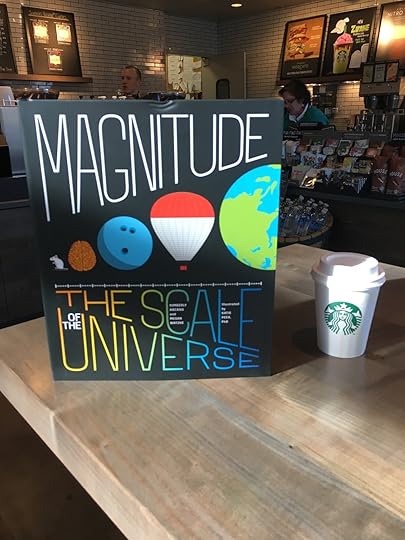 While confusion could have reigned indefinitely for the coffee and tea lovers of America, something interesting happened: we figured it out. It turns out that it didn’t matter that – at least at first – we didn’t really know how many ounces or milliliters a short or a venti held.We quickly learned that a tall was bigger than a short, a grande was bigger than a tall, and so on. We were able to navigate this new information by comparison.This might seem like a trivial accomplishment for those who have the will and means to enter a Starbucks, but it holds a lesson that applies to many other areas.We can learn new concepts and get meaningful perspective on a slew of topics by using familiar experiences to relate to unfamiliar ones. All you need are a few tools to help draw useful comparisons.Take, for example, the economy. Most of us can visualize a thousand dollars and many of us can fantasize about a million dollars. But what about a billion or even a trillion dollars?Here we can employ a useful term: “order of magnitude”. In most cases, each “order of magnitude” represents the multiplication or division by ten. The difference between a thousand and a million is three orders of magnitude. (A thousand times ten is ten thousand, times another ten is a hundred thousand, and another is one million.)Once you have orders of magnitude down, you can quickly assess that the difference between a million and a trillion is another factor of three – or a thousand times. We can relate one entity to another by knowing how many orders of magnitude separate the two.It’s not just in the economy where really big numbers come into play. Natural disasters make many of us wonder how bad are these storms – is this really a lot of wind or water and, if so, how much? Or, perhaps you want to know how much extra storage or power the latest smartphone delivers compared to its predecessors. Knowing magnitude gives all of us the power to compare.
While confusion could have reigned indefinitely for the coffee and tea lovers of America, something interesting happened: we figured it out. It turns out that it didn’t matter that – at least at first – we didn’t really know how many ounces or milliliters a short or a venti held.We quickly learned that a tall was bigger than a short, a grande was bigger than a tall, and so on. We were able to navigate this new information by comparison.This might seem like a trivial accomplishment for those who have the will and means to enter a Starbucks, but it holds a lesson that applies to many other areas.We can learn new concepts and get meaningful perspective on a slew of topics by using familiar experiences to relate to unfamiliar ones. All you need are a few tools to help draw useful comparisons.Take, for example, the economy. Most of us can visualize a thousand dollars and many of us can fantasize about a million dollars. But what about a billion or even a trillion dollars?Here we can employ a useful term: “order of magnitude”. In most cases, each “order of magnitude” represents the multiplication or division by ten. The difference between a thousand and a million is three orders of magnitude. (A thousand times ten is ten thousand, times another ten is a hundred thousand, and another is one million.)Once you have orders of magnitude down, you can quickly assess that the difference between a million and a trillion is another factor of three – or a thousand times. We can relate one entity to another by knowing how many orders of magnitude separate the two.It’s not just in the economy where really big numbers come into play. Natural disasters make many of us wonder how bad are these storms – is this really a lot of wind or water and, if so, how much? Or, perhaps you want to know how much extra storage or power the latest smartphone delivers compared to its predecessors. Knowing magnitude gives all of us the power to compare. This is when we can return to our short-tall-grande-venti. We might not know all of the details of what is happening throughout the world, but we can understand the magnitude, or scale, of current events by comparing them to things that we can comprehend.But for a break from the world and its issues, perhaps we will head off to our local Starbucks to enjoy a favorite beverage. We know which size we want.* In Starbuckese, a “short” is 8 ounces, a “tall” is 12 ounces, “grandes” are 24 ounces, and a “trenti” beverage is 31 ounces. Consume that last amount of caffeine at your own risk.Reminder! If you'd like a bookplate for your preordered or newly ordered copy of Magnitude, see our previous post on how to request one (for free)!.
This is when we can return to our short-tall-grande-venti. We might not know all of the details of what is happening throughout the world, but we can understand the magnitude, or scale, of current events by comparing them to things that we can comprehend.But for a break from the world and its issues, perhaps we will head off to our local Starbucks to enjoy a favorite beverage. We know which size we want.* In Starbuckese, a “short” is 8 ounces, a “tall” is 12 ounces, “grandes” are 24 ounces, and a “trenti” beverage is 31 ounces. Consume that last amount of caffeine at your own risk.Reminder! If you'd like a bookplate for your preordered or newly ordered copy of Magnitude, see our previous post on how to request one (for free)!.
 While confusion could have reigned indefinitely for the coffee and tea lovers of America, something interesting happened: we figured it out. It turns out that it didn’t matter that – at least at first – we didn’t really know how many ounces or milliliters a short or a venti held.We quickly learned that a tall was bigger than a short, a grande was bigger than a tall, and so on. We were able to navigate this new information by comparison.This might seem like a trivial accomplishment for those who have the will and means to enter a Starbucks, but it holds a lesson that applies to many other areas.We can learn new concepts and get meaningful perspective on a slew of topics by using familiar experiences to relate to unfamiliar ones. All you need are a few tools to help draw useful comparisons.Take, for example, the economy. Most of us can visualize a thousand dollars and many of us can fantasize about a million dollars. But what about a billion or even a trillion dollars?Here we can employ a useful term: “order of magnitude”. In most cases, each “order of magnitude” represents the multiplication or division by ten. The difference between a thousand and a million is three orders of magnitude. (A thousand times ten is ten thousand, times another ten is a hundred thousand, and another is one million.)Once you have orders of magnitude down, you can quickly assess that the difference between a million and a trillion is another factor of three – or a thousand times. We can relate one entity to another by knowing how many orders of magnitude separate the two.It’s not just in the economy where really big numbers come into play. Natural disasters make many of us wonder how bad are these storms – is this really a lot of wind or water and, if so, how much? Or, perhaps you want to know how much extra storage or power the latest smartphone delivers compared to its predecessors. Knowing magnitude gives all of us the power to compare.
While confusion could have reigned indefinitely for the coffee and tea lovers of America, something interesting happened: we figured it out. It turns out that it didn’t matter that – at least at first – we didn’t really know how many ounces or milliliters a short or a venti held.We quickly learned that a tall was bigger than a short, a grande was bigger than a tall, and so on. We were able to navigate this new information by comparison.This might seem like a trivial accomplishment for those who have the will and means to enter a Starbucks, but it holds a lesson that applies to many other areas.We can learn new concepts and get meaningful perspective on a slew of topics by using familiar experiences to relate to unfamiliar ones. All you need are a few tools to help draw useful comparisons.Take, for example, the economy. Most of us can visualize a thousand dollars and many of us can fantasize about a million dollars. But what about a billion or even a trillion dollars?Here we can employ a useful term: “order of magnitude”. In most cases, each “order of magnitude” represents the multiplication or division by ten. The difference between a thousand and a million is three orders of magnitude. (A thousand times ten is ten thousand, times another ten is a hundred thousand, and another is one million.)Once you have orders of magnitude down, you can quickly assess that the difference between a million and a trillion is another factor of three – or a thousand times. We can relate one entity to another by knowing how many orders of magnitude separate the two.It’s not just in the economy where really big numbers come into play. Natural disasters make many of us wonder how bad are these storms – is this really a lot of wind or water and, if so, how much? Or, perhaps you want to know how much extra storage or power the latest smartphone delivers compared to its predecessors. Knowing magnitude gives all of us the power to compare. This is when we can return to our short-tall-grande-venti. We might not know all of the details of what is happening throughout the world, but we can understand the magnitude, or scale, of current events by comparing them to things that we can comprehend.But for a break from the world and its issues, perhaps we will head off to our local Starbucks to enjoy a favorite beverage. We know which size we want.* In Starbuckese, a “short” is 8 ounces, a “tall” is 12 ounces, “grandes” are 24 ounces, and a “trenti” beverage is 31 ounces. Consume that last amount of caffeine at your own risk.Reminder! If you'd like a bookplate for your preordered or newly ordered copy of Magnitude, see our previous post on how to request one (for free)!.
This is when we can return to our short-tall-grande-venti. We might not know all of the details of what is happening throughout the world, but we can understand the magnitude, or scale, of current events by comparing them to things that we can comprehend.But for a break from the world and its issues, perhaps we will head off to our local Starbucks to enjoy a favorite beverage. We know which size we want.* In Starbuckese, a “short” is 8 ounces, a “tall” is 12 ounces, “grandes” are 24 ounces, and a “trenti” beverage is 31 ounces. Consume that last amount of caffeine at your own risk.Reminder! If you'd like a bookplate for your preordered or newly ordered copy of Magnitude, see our previous post on how to request one (for free)!.
Published on November 01, 2017 05:54
October 25, 2017
Special "Magnitude" Offer!
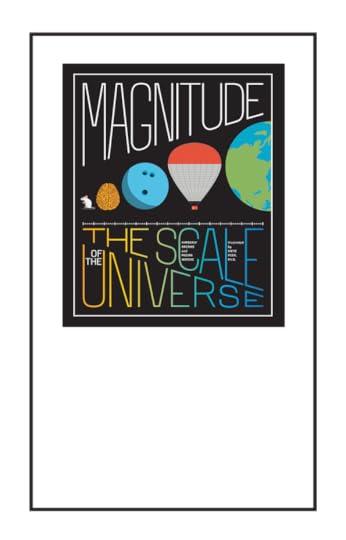 Our new book, “Magnitude: The Scale of the Universe,” goes on sale on November 7th. We are so excited for the book to make its way out into the expansive world that we’d like to extend a special offer. If you order a copy of the book by November 14, 2017 and send us proof of purchase electronically (photo of receipt, order number, etc.), we’ll send you a signed bookplate and an extra gift.A bookplate is a small insert you can place in the front of a book so that you have a signed copy. Since Kim and I live on opposite ends of the country (Rhode Island and Washington state, respectively), we figured this would cut out a lot of traveling for those of you who would like both of our signatures!This is a small way for us to say thank you to our readers. We hope you enjoy reading this book as much as we’ve enjoyed writing it. Best,Megan and KimDetails:Please send a digital copy showing your proof of purchase by November 14, 2017 to either (or both) of us at one of the addresses below to receive this special offer. Include a postal address for us to ship the bookplate and gift to:Email: megan1104@gmail.com; kimberlykowal@me.comTwitter: @megwatzke; @kimberlykowalInstagram: meganwatzke; kimberlykowal
Our new book, “Magnitude: The Scale of the Universe,” goes on sale on November 7th. We are so excited for the book to make its way out into the expansive world that we’d like to extend a special offer. If you order a copy of the book by November 14, 2017 and send us proof of purchase electronically (photo of receipt, order number, etc.), we’ll send you a signed bookplate and an extra gift.A bookplate is a small insert you can place in the front of a book so that you have a signed copy. Since Kim and I live on opposite ends of the country (Rhode Island and Washington state, respectively), we figured this would cut out a lot of traveling for those of you who would like both of our signatures!This is a small way for us to say thank you to our readers. We hope you enjoy reading this book as much as we’ve enjoyed writing it. Best,Megan and KimDetails:Please send a digital copy showing your proof of purchase by November 14, 2017 to either (or both) of us at one of the addresses below to receive this special offer. Include a postal address for us to ship the bookplate and gift to:Email: megan1104@gmail.com; kimberlykowal@me.comTwitter: @megwatzke; @kimberlykowalInstagram: meganwatzke; kimberlykowal
Published on October 25, 2017 10:28
October 19, 2017
New giveaway for MAGNITUDE
Our publisher Black Dog & Leventhal/Hachette Books has posted a new Goodreads Giveaway for our upcoming book Magnitude: The Scale of the Universe (coming out on November 7, 2017). 12 copies are available but the giveaway ends October 24th so sign up now!
Giveaway
Kimberly K. Arcand
Giveaway
Kimberly K. Arcand
Published on October 19, 2017 05:18
•
Tags:
giveaway, goodreads, nonfiction, science
October 18, 2017
Making Sense of Your World Through Scale
 What do natural disasters, gravitational waves from space, and Taylor Swift have to do with one another? The obvious answer is “not much.”However, these seemingly disparate phenomena all have one very important thing in common: the requirement to comprehend and consume extreme numbers – both very large and very small.Our world, including current events, is full of facts and figures that challenge our understanding. For example, wildfires have destroyed over 220,000 acres in California alone in the most recent spate of horrific fires there, and more than 8.5 million acres have burned in the western U.S this year to date. While this sounds like a big number, what does it mean?In a completely different realm, scientists on Monday announced that they had detected tiny ripples in the fabric of space-time cause by the merger of two cores of dead stars. Gravitational waves are extremely tiny, which is why scientists need to build special, super-sensitive detectors placed thousands of miles apart to make such detections. But how small are gravitational waves really?And then there’s Taylor Swift. When she launched her latest single this summer, it nearly, as they say, broke the Internet. Swift’s “Look What You Made Me Do,” released on August 25th, was streamed over 10 million times on Spotify, and garnered 24 million views of the video over the course of its first weekend. We’re told that this is a new record, but by a lot or a little?This is the crux of the issue: we are barraged with various numbers and figures, some of which sound incomprehensible, throughout our daily lives. From the economy to the environment, from popular culture to current science, and practically anything in between, there are many values that can be difficult to grasp: billions of tons of ice lost in Antarctica, trillions of U.S. dollars worth of debt, quadrillions of calculations per second in a super computer, and so forth (a quadrillion is, amazingly, not a made up number, it is a 10 with 24 zeroes after it).This is where the simple, yet powerful, tool of comparisons can come to the rescue. Find out more in our piece on Huffington Postand Medium.
What do natural disasters, gravitational waves from space, and Taylor Swift have to do with one another? The obvious answer is “not much.”However, these seemingly disparate phenomena all have one very important thing in common: the requirement to comprehend and consume extreme numbers – both very large and very small.Our world, including current events, is full of facts and figures that challenge our understanding. For example, wildfires have destroyed over 220,000 acres in California alone in the most recent spate of horrific fires there, and more than 8.5 million acres have burned in the western U.S this year to date. While this sounds like a big number, what does it mean?In a completely different realm, scientists on Monday announced that they had detected tiny ripples in the fabric of space-time cause by the merger of two cores of dead stars. Gravitational waves are extremely tiny, which is why scientists need to build special, super-sensitive detectors placed thousands of miles apart to make such detections. But how small are gravitational waves really?And then there’s Taylor Swift. When she launched her latest single this summer, it nearly, as they say, broke the Internet. Swift’s “Look What You Made Me Do,” released on August 25th, was streamed over 10 million times on Spotify, and garnered 24 million views of the video over the course of its first weekend. We’re told that this is a new record, but by a lot or a little?This is the crux of the issue: we are barraged with various numbers and figures, some of which sound incomprehensible, throughout our daily lives. From the economy to the environment, from popular culture to current science, and practically anything in between, there are many values that can be difficult to grasp: billions of tons of ice lost in Antarctica, trillions of U.S. dollars worth of debt, quadrillions of calculations per second in a super computer, and so forth (a quadrillion is, amazingly, not a made up number, it is a 10 with 24 zeroes after it).This is where the simple, yet powerful, tool of comparisons can come to the rescue. Find out more in our piece on Huffington Postand Medium.
Published on October 18, 2017 10:30



